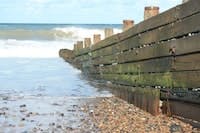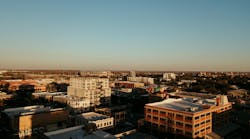The Nisqually Estuary restoration team received national accolades for outstanding efforts to restore and protect the coastal environment as a recipient of the Coastal America Partnership Award. This is the only award of its kind presented by the Obama Administration for on-the-ground environmental restoration partnership projects.
Federal, regional, tribal and non-profit officials met at the Nisqually National Wildlife Refuge for a tour and award ceremony to recognize the restoration of more than 900 acres of tidal habitat in the Nisqually Delta.
“The restoration of the Nisqually Estuary and delta system is striking,” said Virginia Tippie, Coastal America director. “It is an example of an opportunity that resulted from critical community needs and the development of key partnerships.”
The 15-year-long project was led by a partnership of federal, state, tribal, non-profit, and local scientists and officials who worked together to return the Nisqually Delta to a more natural state. A one-mile long boardwalk trail allows visitors to explore the delta, view wildlife and observe the estuary.
Officials from the U.S. Department of Interior, U.S. Environmental Protection Agency, Nisqually Indian Tribe, U.S. Fish and Wildlife Service, National Oceanic and Atmospheric Administration, Ducks Unlimited and the Nisqually River Council were in attendance, as were representatives of all 17 partners on the team.
In October 2009, the Brown Farm Dike was removed after a century of blocking tidal flow, allowing the tides to return to more than 760 acres of the Nisqually National Wildlife Refuge. Along with 190 acres of wetlands restored by the Nisqually Indian Tribe, the Nisqually Delta represents the largest estuary restoration project in the Pacific Northwest to assist in recovery of Puget Sound salmon and wildlife populations.
Over the past decade, the refuge and close partners, including the tribe and Ducks Unlimited, have reconnected more than 35 kilometers of the historic tidal slough systems and flood plains with the tides of Puget Sound, which could increase salt marsh habitat in the southern reach of Puget Sound by 55%. This partnership effort was an important step in the recovery of Puget Sound.
Source: EPA


